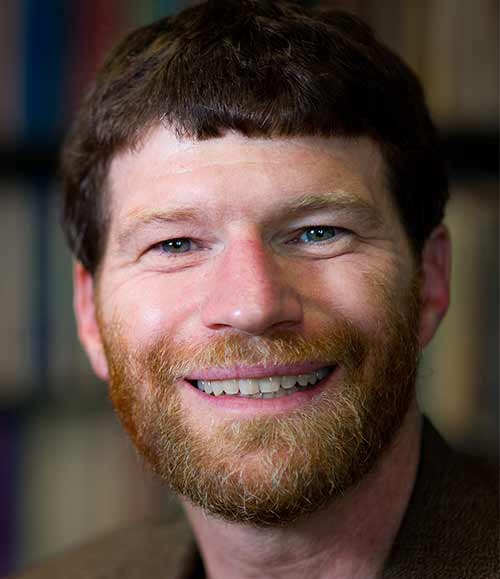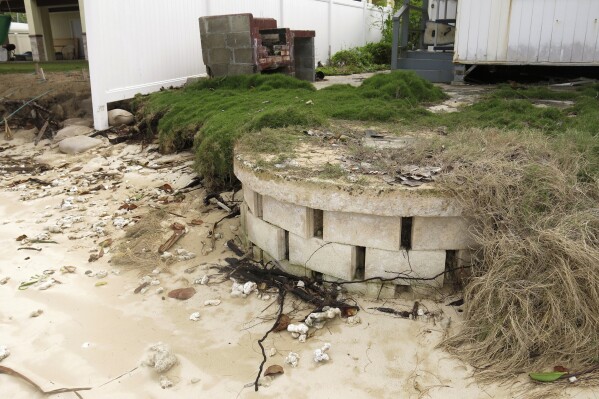MSU Sociologist hopes to improve island wastewater infrastructure with NSF Convergence Accelerator Award
February 29, 2024 - Karessa Weir
Islands may seem like idyllic environments but not when it comes to the harsh realities of dealing with wastewater. Each day, an estimated 52 million gallons of wastewater leak through the porous volcanic soils on the Hawaiian islands into aquifers and coastal environments, polluting them with nutrients and pathogens, according to an MSU Sociology assistant professor, part of a group of researchers hoping to find a solution to the hazardous conditions.
 MSU Sociology Associate Professor Stephen Gasteyer. together with principal investigator Dr. Daniel Yeh (Professor of Environmental Engineering, University of South Florida) and researchers from the University of Hawaii at Manoa and Swiftwater Solutions LCC, were announced as recipients of the National Science Foundation Convergence Accelerator award for $650,000 for the proposal “Towards Resilient, Equitable, Safe and Sustainable Water for Islands.”
MSU Sociology Associate Professor Stephen Gasteyer. together with principal investigator Dr. Daniel Yeh (Professor of Environmental Engineering, University of South Florida) and researchers from the University of Hawaii at Manoa and Swiftwater Solutions LCC, were announced as recipients of the National Science Foundation Convergence Accelerator award for $650,000 for the proposal “Towards Resilient, Equitable, Safe and Sustainable Water for Islands.”
“The prevailing onsite wastewater infrastructure on most U.S. Pacific islands is inadequate and poses a threat to island water supplies, damages marine ecosystems, coral reefs and fisheries, and often disproportionately affects disadvantaged communities,” the team wrote in their proposal. “Conventional sewer-based centralized wastewater systems or onsite septic tanks are unsuitable and inadequate in many areas as replacements for cesspools. There is an urgent need to develop or introduce novel decentralized wastewater technologies and implementation strategies which can effectively provide protection to human health and the environment. “
The first phase of the research project includes creating, testing and implementing new technology to replace current drain fields with house house-level iron-cycling biofilters and “novel water, sanitation and hygiene micro-grids.”
This is part of $9.8 million NSF is investing in equitable water solutions proposed by 15 teams, including Dr. Gasteyer’s group. It hopes to address the 2.2 billion people who lack safely managed drinking water and 3.5 billion people who lack safely-managed sanitation.

FILThThis Jan. 26, 2015 photo provided by the Hawaii Department of Land and Natural Resources shows a partially exposed cinderblock cesspool pit with a lid on an eroding shoreline in Punaluu, Hawaii. (Hawaii Department of Land and Natural Resources via AP)
"Because water needs are complex, there isn't a one-size-fits-all solution," said Douglas Maughan, head of the NSF Convergence Accelerator program." This topic is perfect for convergence — bringing multiple disciplines, expertises and sectors together — to solve large-scale challenges. We're excited to launch this track and to see how the 15 teams will engage and partner with communities, end-users and stakeholders to develop real-world sustainable solutions.”
The problems of cesspools in Hawaii are not just threatening human health but are also culpable in the destruction of coral reefs. An Associated Press report found climate change and rising seas are eroding Hawaii’s coastline and pushing the groundwater closer to the surface. This allows the wastewater to mix with the water table and flow into the ocean.
“When the water table rises, as it will and as it does already, that’s going to be extremely polluted water right there in our communities, in the midst of our communities — on the roads, on the sidewalks, in the backyards,” said Chip Fletcher, interim dean at the School of Ocean and Earth Science and Technology at the University of Hawaii-Manoa. “That is going to represent a massive health threat.”

